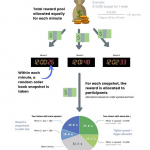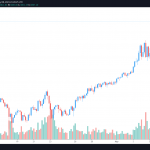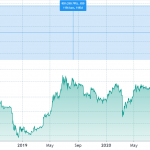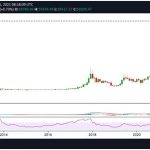As you saw in our Trading vs. Investing article, in several ways, value investing is the polar opposite of trading. That said, in other regards, the two different approaches are very close to each other. Following your investment rules with discipline, for example, is as important in investing as it is in trading. In short, objectivity, patience, dealing with emotions, and other “soft” skills are very important for both methods. The actual rules and best practices to follow, on the other hand, are usually unique for trading and investing.
Also read: 10 Essential Trading Rules for Rookies
As with trading, there are rules that are more important for beginners than they are later on in an investor’s career. In several ways, staying in the game is more important than your initial results, as with experience you will naturally evolve, find your comfort zone, and be able to focus on your edge. The following rules are addressing the most basic mistakes that rookies commit, while also focusing on the cornerstones of investing that will jump-start your career and boost your returns.
Let’s jump straight into it.
Good investing is simple, don’t complicate your analysis
This is probably the most important rule that should be taught on financial courses before anything else. Keep it simple! Buy great assets for a fair price. That sentence is the key to investing. Sophisticated models are often just tools for justifying a “gut” decision, or worse, convincing yourself that your initial decision was wrong. Don’t fall into that trap!
Think about it, what makes a great company for example? It has an edge over its competitors, has a solid and growing market where it sells its products, and has a history if innovation and flexibility. These simple rules are almost always enough to find investment candidates, and if the valuation is also favorable, you will have the margin of safety to act upon your analysis without taking on unnecessary risks.
Valuation matters in the long-run but it’s not a timing tool
 One of the common mistakes of newbie investors, including your humble author himself, is that you will be looking for “the Holy Grail” measure that will help you decide whether or not a company or stock or a market is overvalued, undervalued, or fairly valued. The truth is that there are several measures that come close enough, but investing is far from being a valuation-only game.
One of the common mistakes of newbie investors, including your humble author himself, is that you will be looking for “the Holy Grail” measure that will help you decide whether or not a company or stock or a market is overvalued, undervalued, or fairly valued. The truth is that there are several measures that come close enough, but investing is far from being a valuation-only game.
This is especially true if you try to base your timing decisions on valuations. As Keynes once said, markets can stay irrational longer than you can stay solvent. The emphasis on timing is crucial, as valuation should be incorporated into your analysis, but don’t expect the market to turn higher just because the asset got undervalued, or crash because it’s overvalued. As an investor, you have to accept that even long-term price trends might be products of mass psychology, economic trends, government intervention, and so on. On the long run valuation drives returns, but short-term it says nothing about the direction of the market.
Start investing in businesses that you know
The competitive edge, the stable and growing market, and the history of good decisions seem like very easy filters for companies, but they are only easy if you know the business that you are dealing with. Otherwise, you might be basing your decisions on false assumptions. Of course, this goes for all other forms of investments, from farming to antiques.
If the most successful investors stick to a few industries that they are familiar with, why would a beginner venture into unknown territories? Using your knowledge and interests can give you the edge in the beginning of your career.
Markets show the value of the last trade, not the “real” value of assets
Maybe the biggest fallacy, which is common even among financial professionals, is that they treat the price of an asset as the one and only truth out there, without thinking about the mechanics of markets. That puts the “valuation” of assets into totally unrealistic heights near the top of bull markets and to insanely cheap levels at the bottom of bear markets.
For an individual investor these are great opportunities, but remember, on average investors will never be able to realize those prices. Why? Because if every owner of the given stock appeared on the market to buy or sell, the realized price would be way lower or higher than the quote that you see on your screen.
The tide of a bull market lifts all “ships” but a bear market hurts even the best companies
 One of the most important lessons for an investor comes from the fundamental change in risk appetite between rising and falling markets. Bull markets tend to be long and a lot of times boring affairs for an investor, as valuations get richer and richer across the board, quietly reaching levels where it will be very hard to pick bargains. On the flipside, your holdings will deliver great returns, with relatively low volatility, a lot of times much more than you’d ever expected. Value these times and be patient until you notice the signs of change.
One of the most important lessons for an investor comes from the fundamental change in risk appetite between rising and falling markets. Bull markets tend to be long and a lot of times boring affairs for an investor, as valuations get richer and richer across the board, quietly reaching levels where it will be very hard to pick bargains. On the flipside, your holdings will deliver great returns, with relatively low volatility, a lot of times much more than you’d ever expected. Value these times and be patient until you notice the signs of change.
On the other hand, you have to know that when markets tank, even the best companies can suffer great losses. Sentiment turns bleak, and panicked investors run for the exits, often pushing valuations way below any reasonable level. If you are confident in your decisions you will hold on to your investments and even add to your holdings rather than dumping them on the market.
Be greedy when others are in panic and cautious in times of euphoria
Another rule that is attributed to Warren Buffett, but if you understand the previous rules it’s just a small logical step. That said, this small step is often the hardest, on market bottoms, everything looks gloomy, everyone thinks the world will end, and even as your analysis shows bargains all over the place, you will most likely hesitate to “pull the trigger”.
Conversely, near tops you will have plenty of excuses to ignore the warnings signs that pop up, as the economy will be great, investors will be piling into risk assets, and prices will seemingly keep on rising forever. Still, these times should be used to gradually lower your exposure to prepare for the inevitable sobering.
This time it’s not different
Panics and bubbles almost always give way to extreme opinions and baseless speculation, with a “new era of investments” or a “plateau of high valuations” on one side and “the collapse of the financial system” or the “end of the economy as we know it” on the other side. These theories help in justifying the irrational nature of markets, while also feeding the excess sentiment, but don’t be fooled, 99% of the times they will have nothing to do with the reality. Base your decisions on your analysis and common sense, rather than wild predictions and unfounded projections.
Successful investing is about patience, excitement shouldn’t be your goal

Patience is Success
If you are having lots of fun while investing you might be doing something wrong; too much exposure, leverage, too concentrated bets could all give you thrills, but usually at the cost of way too high risk. Most of the times, a good purchase is in segments that are totally forgotten, and considered “boring”. Think about it, what are the chances that you will find deeply undervalued assets in a hyped market?
Also, exciting market moves are characteristics of a bubble, and although bubbles are great to ride all the way up, a disciplined investor will likely exit them a bit early. But that’s not a bad thing, bubbles are only easy to trade in hindsight, and although you won’t sell at the exact top, that last 10% won’t make a huge difference if you have been participating in the trend since the start.
Patiently waiting for great opportunities and sitting out boring advances are crucial and underrated skills—work on them.
Sometimes doing nothing is the optimal strategy
This rule is closely related to the previous one, but it’s crucial to understand, especially in today’s environment, that most of the times investors don’t have to be active. The media, sell-side analysts, and your broker are all there to tell you otherwise and encourage you to trade. This often leads to investors mixing trading with value investing and losing perspective.
While it’s common to think that the next big turning point is close, and someone out there is just nailing it, the reality is that trends will usually go on much longer than anyone expects. If you are waiting for a boom or crash every month, then you should revise your expectations, even if once you will inevitably be right.
Buy assets that you would be happy to hold if the market was closed for years
A good purchase should be one for the long run, a good business or a good productive asset at a fair price shouldn’t be the function of market prices. Sure, if the price of your holding triples overnight (thanks to a takeover bid for example) it might be the good decision to cash out immediately, but in general, your investments should “work” without a constant market.
That, of course, means that apart from a liquid safety sum, you shouldn’t rely on your investments as a continuous source of income, rather a long-term source of wealth. This mindset will help you immensely both in your investment and portfolio decisions.
What’s next?
After these basic rules, we will take a look at the most reliable valuation measures that can help you decide what the fair price of an asset should be. That’s a crucial step towards successful investing, but don’t forget, the Holy Grail is not an algorithm, it’s common sense.
Previous article: Chart Patterns, Part 1














